The image before us tells a silent, heartbreaking story. It’s a snapshot of vulnerability and neglect, showing a dog with severely compromised skin, a result of what appears to be advanced mange or a similar debilitating skin condition. Its fur is sparse, revealing inflamed, reddened skin, and its posture conveys a sense of weariness and perhaps a touch of apprehension. This animal’s eyes, though, hold a glimmer of something more profound: a quiet strength, a gentle plea, and perhaps, a spark of hope. This powerful visual serves as a stark reminder of the plight of countless animals who suffer in silence, often hidden from view, their needs unmet and their spirits tested. Yet, it also underscores a critical truth: with compassion, dedicated care, and the right resources, even the most challenging cases can find a path to recovery, transforming from states of profound suffering to lives of comfort and joy. This article will delve into the multifaceted journey of rehabilitating neglected animals, using this poignant image as our guide to explore the causes of such conditions, the vital role of rescue organizations, the intricate process of medical and emotional recovery, and ultimately, the profound impact of adoption.
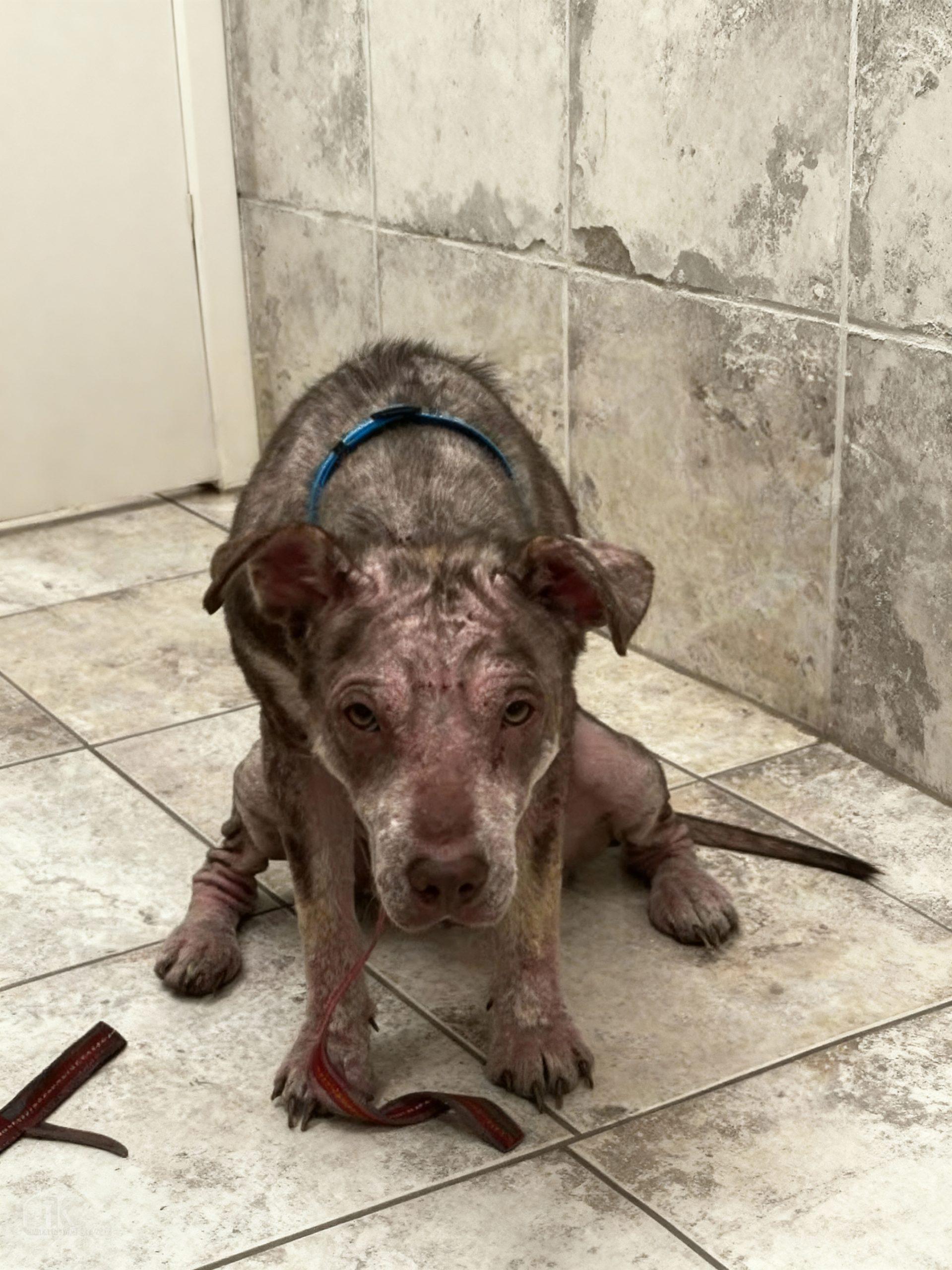
The causes of such severe neglect are often complex and varied, ranging from owner ignorance or financial hardship to deliberate cruelty and abandonment. In many cases, animals like the one pictured are victims of circumstances beyond their control. A lack of proper nutrition weakens their immune systems, making them more susceptible to parasites like demodectic or sarcoptic mange mites. Untreated allergies can escalate into chronic skin infections, and a general lack of hygiene further exacerbates these issues. Compounding these physical ailments is the emotional toll of neglect. Animals that have experienced prolonged suffering often exhibit fear, anxiety, and a distrust of humans, making their initial interactions with caregivers a delicate balance of patience and gentle reassurance. Recognizing these underlying causes is the first crucial step toward effective intervention and rehabilitation. It helps rescue organizations tailor their approach, providing not just immediate medical relief but also a foundation for long-term well-being and trust-building.
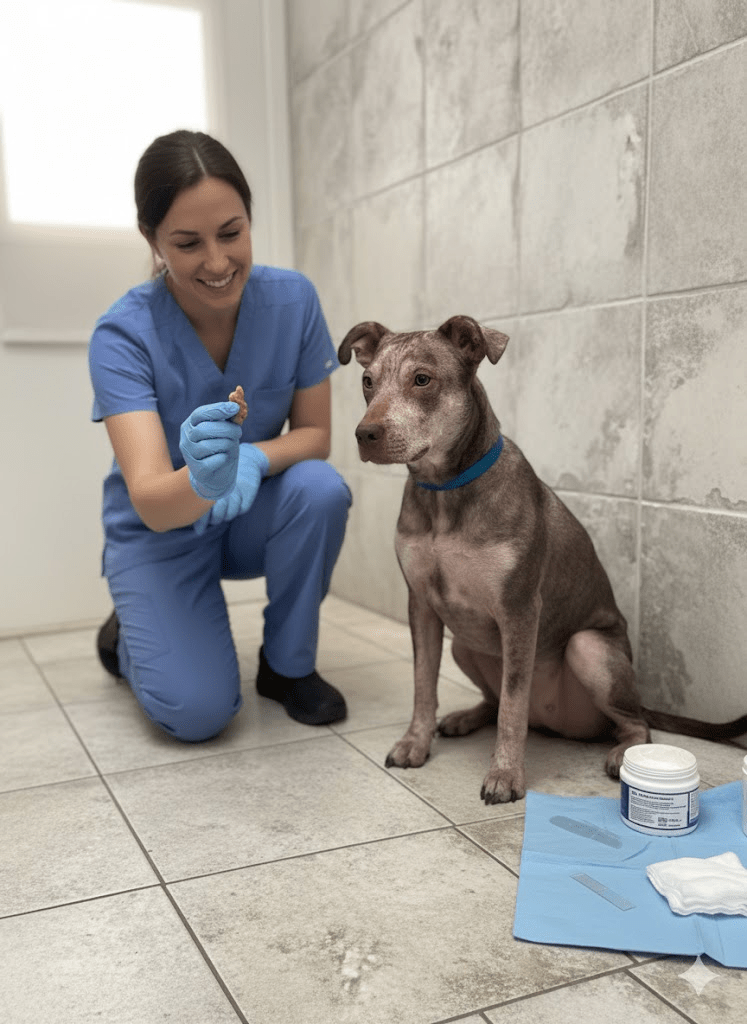
When an animal in such a condition is rescued, the initial focus is invariably on immediate medical stabilization. A comprehensive veterinary examination is paramount to diagnose the underlying issues. For a dog with severe skin conditions, this would involve skin scrapings to identify mites, fungal cultures to rule out ringworm, and blood tests to check for systemic infections, nutritional deficiencies, and organ function. The treatment plan typically involves a multi-pronged approach: medicated baths to soothe irritated skin and kill parasites, oral medications such as antiparasitics and antibiotics for secondary infections, pain management, and a high-quality, easily digestible diet to aid in recovery. Beyond medication, consistent wound care, moisturizing treatments, and careful monitoring of progress are essential. The physical healing process can be lengthy and demanding, requiring immense dedication from veterinary staff and foster caregivers. Each small improvement, like the first signs of new hair growth or a reduction in scratching, is a testament to the resilience of the animal and the commitment of those providing care.
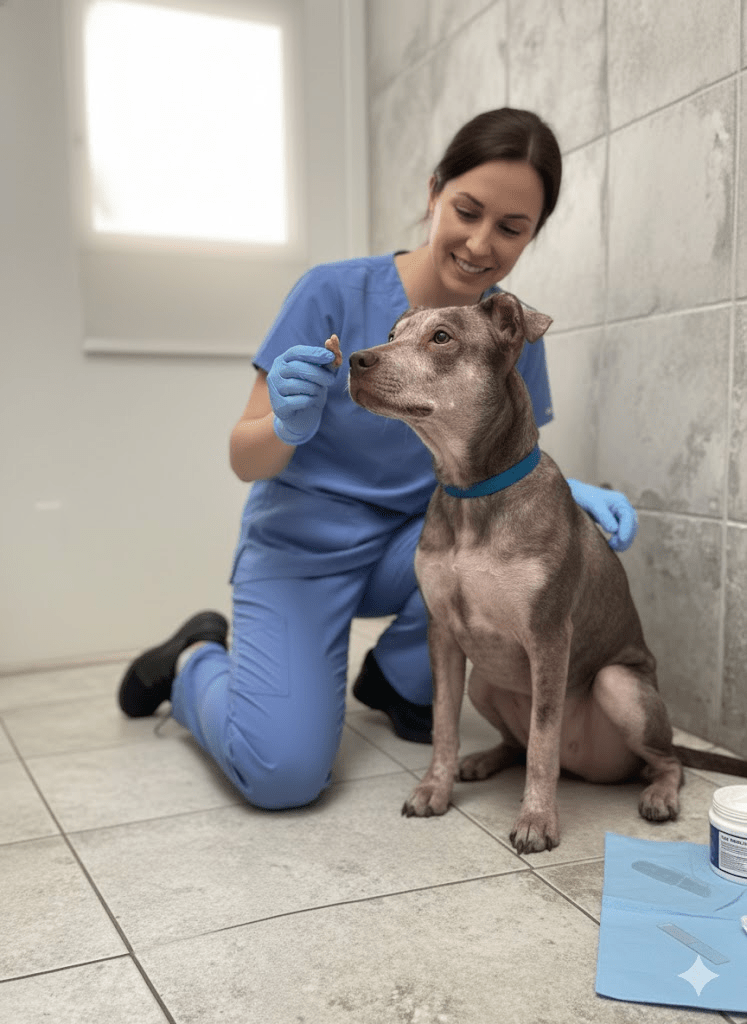
Alongside the critical medical interventions, the emotional and psychological rehabilitation of neglected animals is equally vital. Animals that have experienced trauma often arrive with deeply ingrained fears and behavioral issues. Gentle handling, consistent routines, and a safe, predictable environment are crucial for building trust. Positive reinforcement training, using treats and praise, helps to associate human interaction with pleasant experiences, slowly eroding fear and replacing it with confidence. For dogs, socialization with other calm, well-adjusted animals can also be beneficial, allowing them to relearn appropriate canine behaviors. Foster homes play an indispensable role in this phase, offering a nurturing, one-on-one environment where the animal can feel secure and truly begin to blossom. It’s a process that demands immense patience, empathy, and an understanding of animal behavior, as each step forward, no matter how small, contributes to the animal’s overall healing.
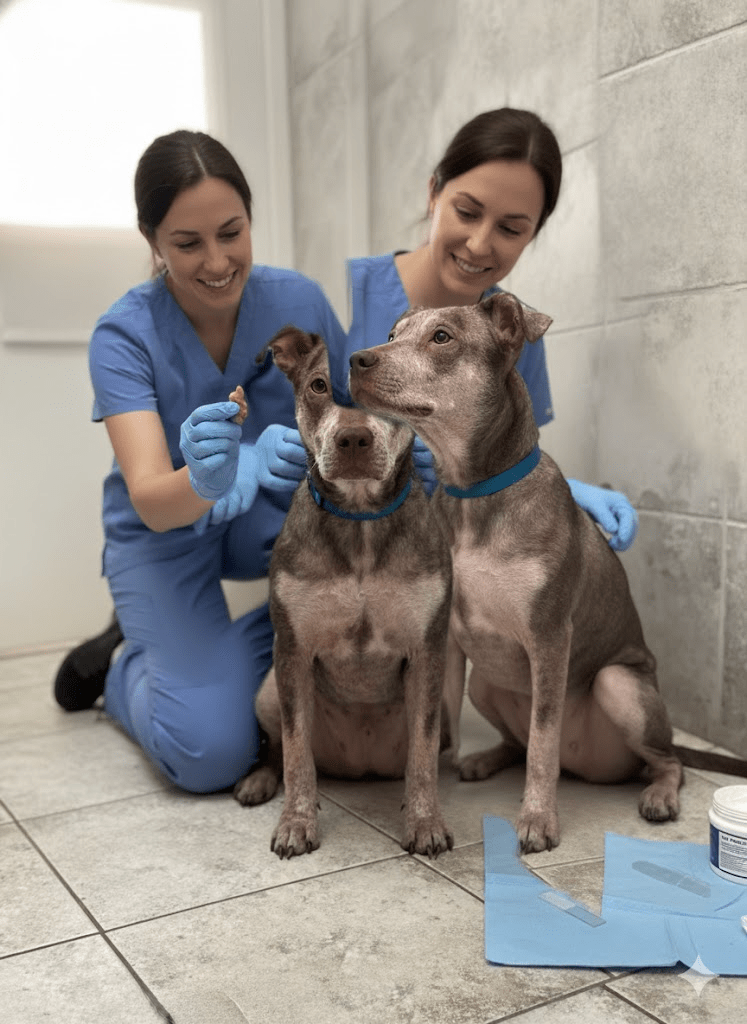
The role of animal rescue organizations in this entire process cannot be overstated. These organizations, often powered by passionate volunteers and limited resources, are the unsung heroes for animals in distress. They are responsible for the initial rescue, providing transport, securing veterinary care, coordinating foster homes, and ultimately, finding forever families. Their work involves significant fundraising to cover medical bills, food, and supplies, as well as extensive outreach to raise awareness and garner support. Without these dedicated individuals and groups, countless animals would continue to suffer, unseen and unheard. Their tireless efforts transform lives, giving a voice to the voiceless and a second chance to those who have been forgotten. Supporting these organizations, whether through donations, volunteering, or fostering, is a direct way for individuals to contribute to this vital mission of healing and hope.

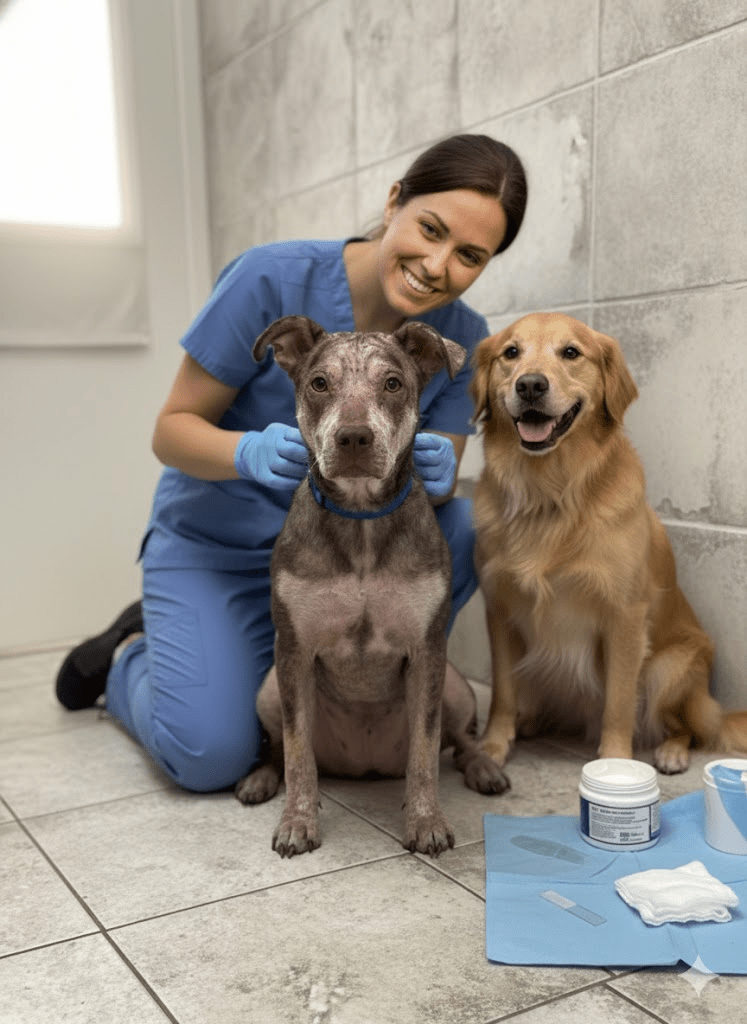
After weeks or months of intensive care, medical treatments, and emotional rehabilitation, the moment arrives when a neglected animal is ready for adoption. This is the culmination of all the efforts, a true turning point where a new chapter begins. Finding the right “forever home” is a meticulous process, involving careful screening of potential adopters to ensure they understand the commitment required, especially for animals with past traumas or ongoing medical needs. A successful adoption means a safe, loving environment where the animal can continue to thrive, free from fear and neglect. It’s a testament to the transformative power of compassion, showcasing how an animal, once broken and suffering, can evolve into a cherished family member, bringing immense joy and unconditional love to their new guardians.







